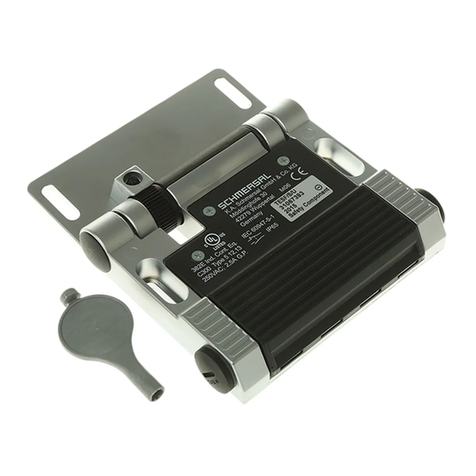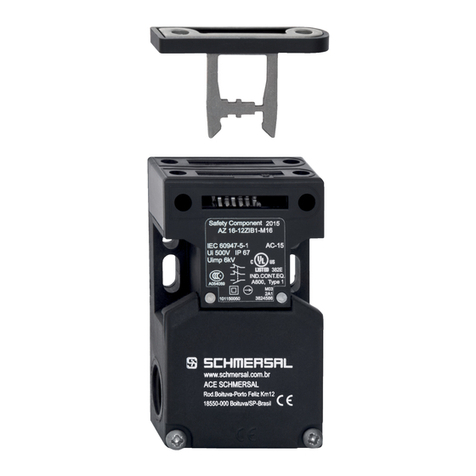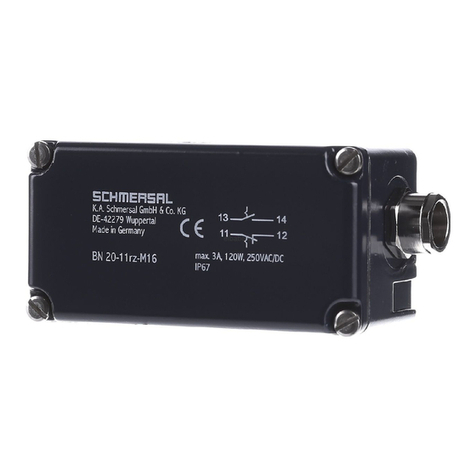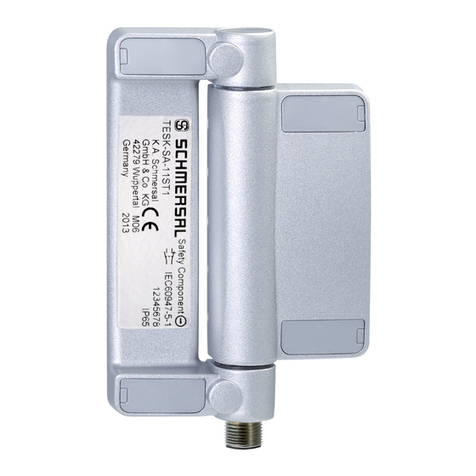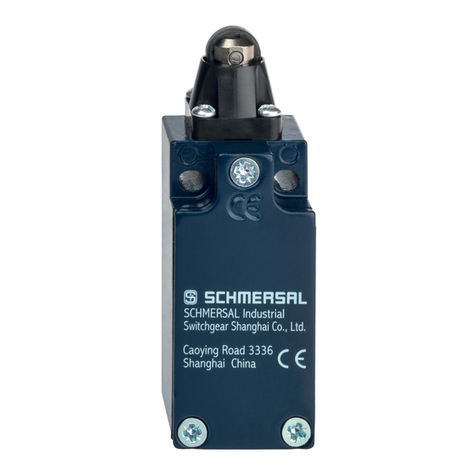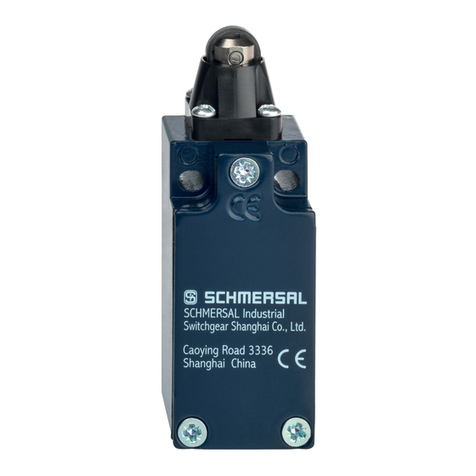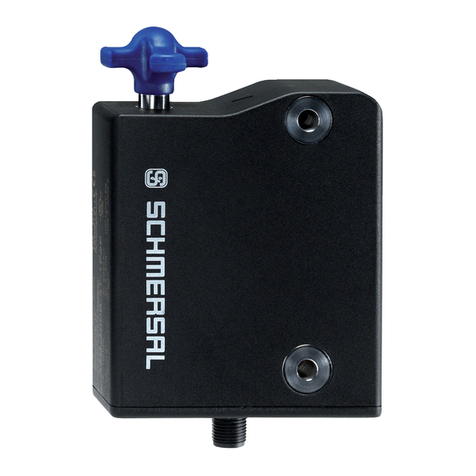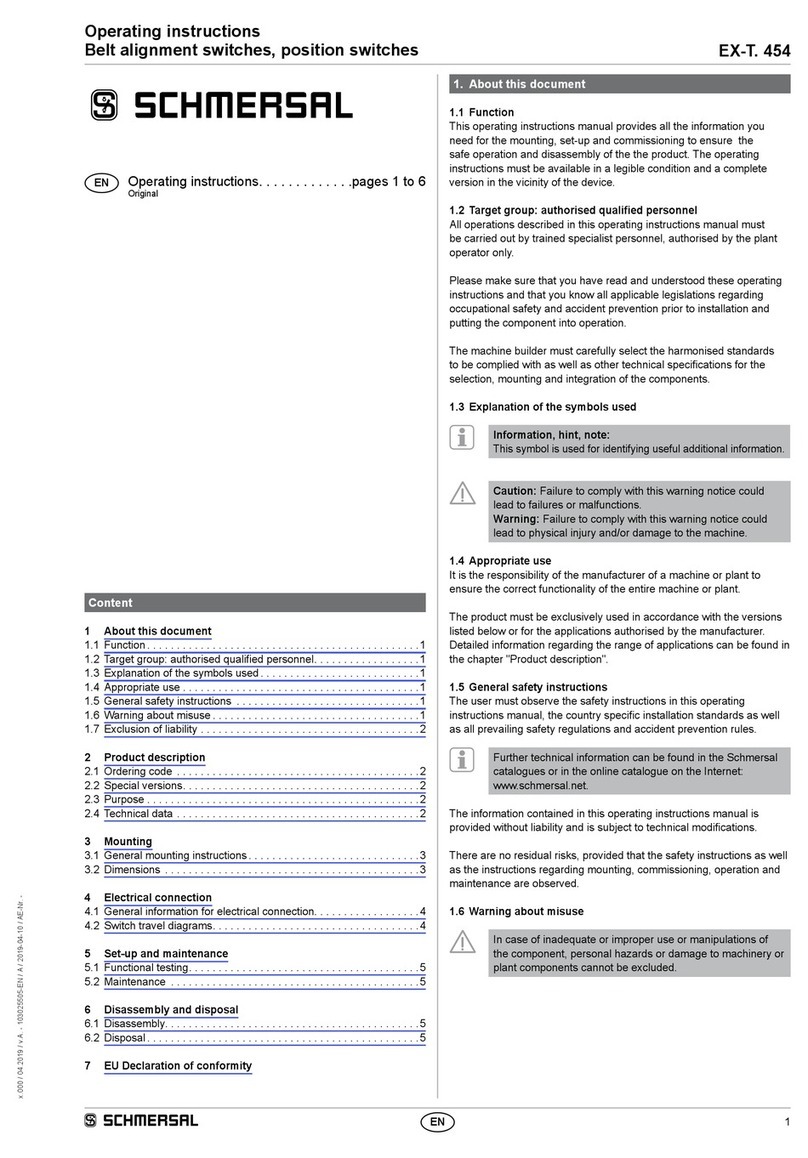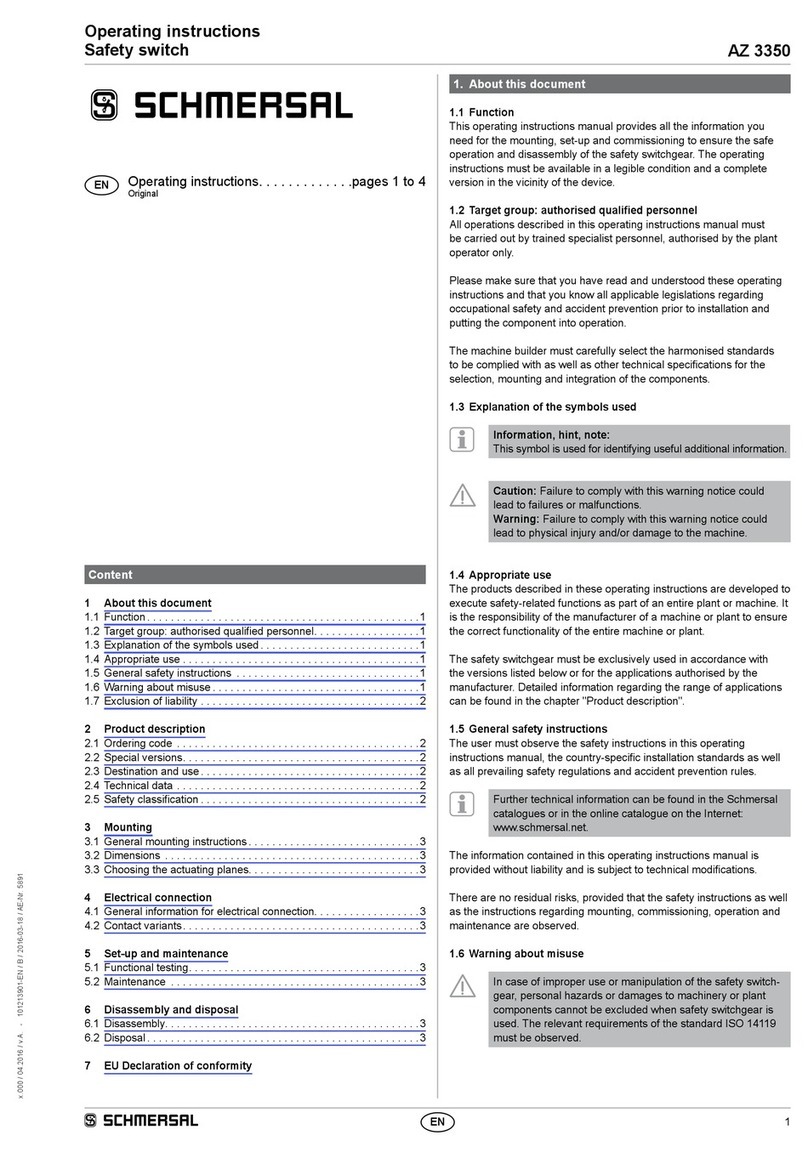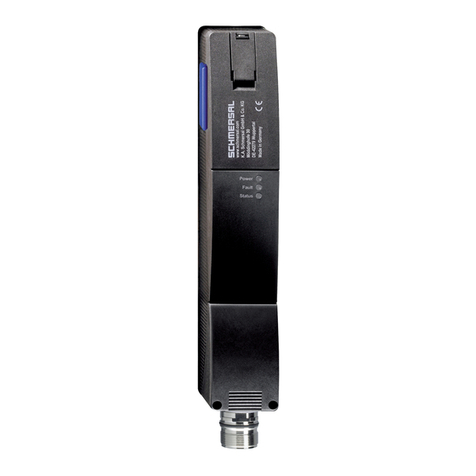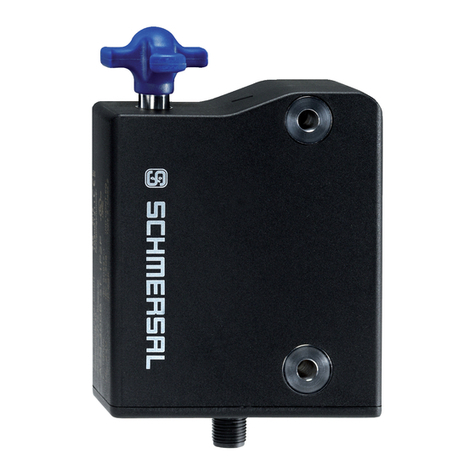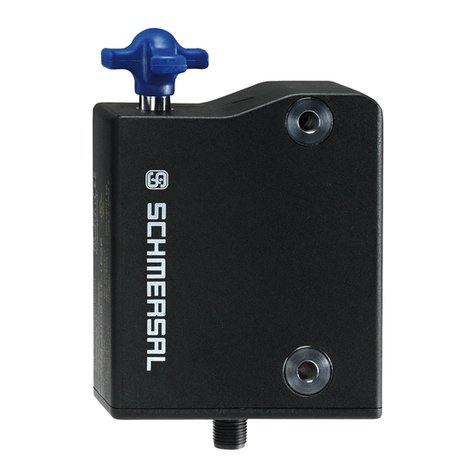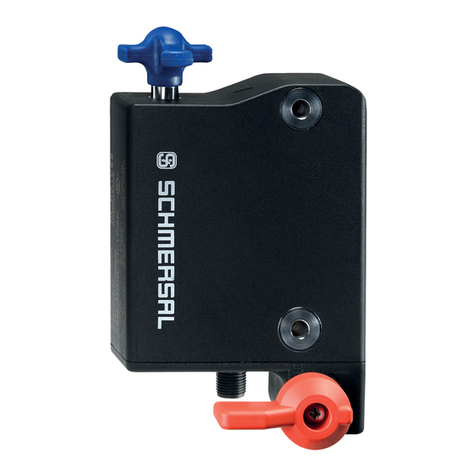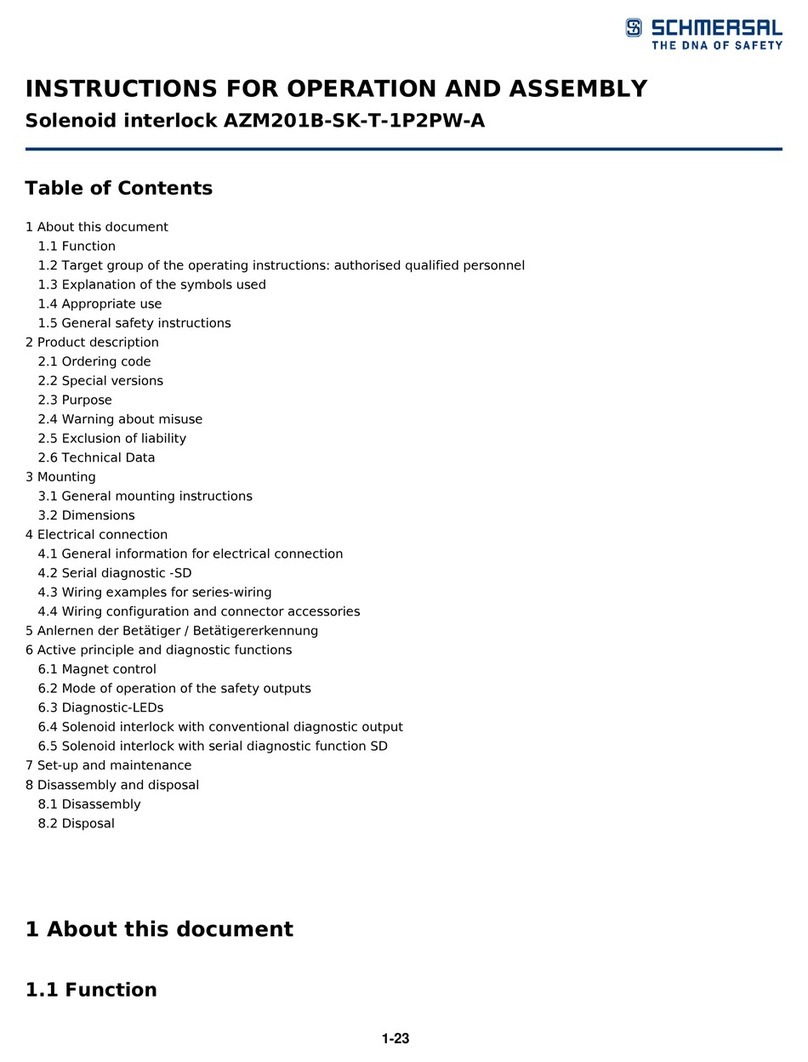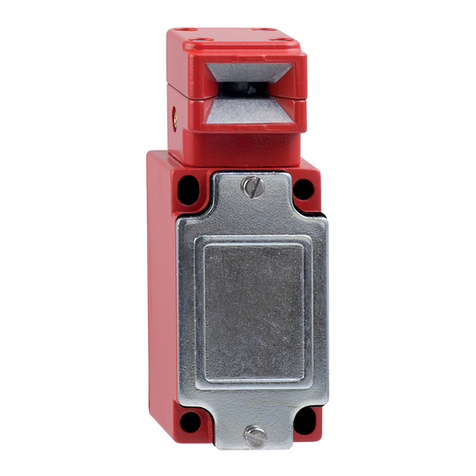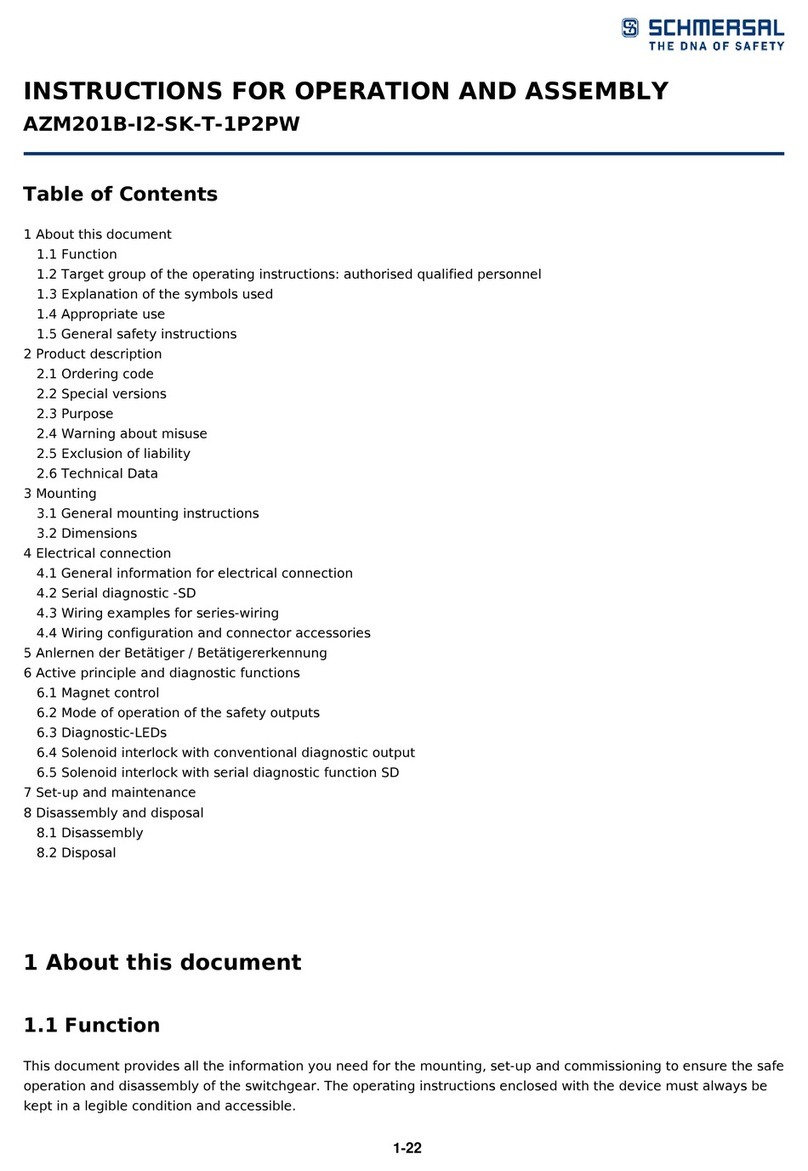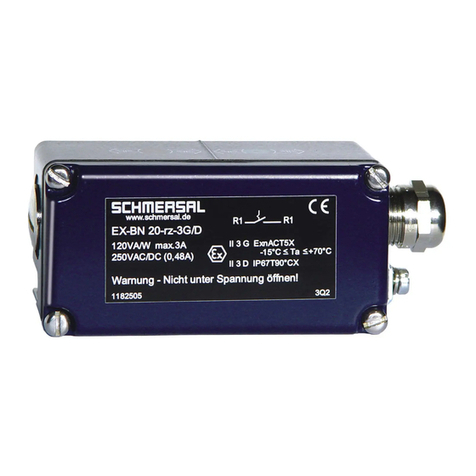
2
Operating instructions
Safety switch EX-AZ 16
EN
1.7 Exclusion of liability
We shall accept no liability for damages and malfunctions resulting from
defective mounting or failure to comply with this operating instructions
manual. The manufacturer shall accept no liability for damages
resulting from the use of unauthorised spare parts or accessories.
For safety reasons, invasive work on the device as well as arbitrary
repairs, conversions and modifications to the device are strictly
forbidden; the manufacturer shall accept no liability for damages
resulting from such invasive work, arbitrary repairs, conversions and/or
modifications to the device.
2. Product description
2.1 Ordering code
This operating instructions manual applies to the following types:
EX-AZ 16-➀ZV➁K-➂-3D
No. Option Description
➀
03 3 NC
12 1 NO / 2 NC
➁
Ejection force
R Latching force 30 N
➂
2254 Latching force 5 N
1762 Front mounting
1637 Gold-plated contacts
Only if the information described in this operating instructions
manual are realised correctly, the safety function and
therefore the compliance with the Machinery Directive and
the Explosion Protection Directive is maintained.
2.2 Special versions
For special versions, which are not listed in the order code below 2.1,
these specifications apply accordingly, provided that they correspond to
the standard version.
2.3 Destination and use
The safety switches of the EX-AZ 16 series are suitable for sliding,
hinged and removable safety guards, which need to be closed to
ensure the necessary operational safety.
The components can be used in explosion-endangered areas of Zone
22 equipment category 3D. allation and maintenance requirements to
the standard series EN 60079 must be met.
The safety switchgears are classified according to ISO 14119
as type 2 switching devices.
The user must evaluate and design the safety chain in
accordance with the relevant standards and the required
safety level.
The entire concept of the control system, in which the safety
component is integrated, must be validated to the relevant
standards.
Conditions for safe operation
Due to their specific impact energy, the components must be fitted
with a protection against mechanical stresses. The specific ambient
temperature range must be observed. The user must provide for a
protection against the permanent influence of UV rays.
2.4 Technical data
Equipment category:
L
II 3D
Ex protection: Ex tc IIIC T90°C Dc X
Standards: EN 60947-5-1, EN 60079-0,
EN 60079-31, BG-GS-ET-15
Coding level according to ISO 14119: low
Enclosure: glass-fibre reinforced thermo-
plastic, self-extinguishing
Max. impact energy: 1 J
Actuating speed: max. 1 m/s
Actuator: stainless steel 1.4301
Protection class: IP67
Contact material: Silver
Contact type: change-over with double break Zb,
or 3 NC contacts, galvanically
separated contact bridges
Switching system:
A
EN 60947-5-1, slow action,
NC contact with positive break
Connection: screw terminals
Cable section: max. 2.5 mm² (incl. conductor ferrules)
Cable entry: 3 x M16 x 1.5
Rated impulse withstand voltage Uimp:6 kV
Rated insulation voltage Ui:500 V
Thermal test current Ithe:2.5 A
Utilisation category: AC-15 / DC-13
Rated operating current/voltage Ie/Ue:2.5 A / 230 VAC
2.5 A / 24 VDC
Max. fuse rating: 4 A gG D-fuse
Positive break travel: 8 mm
Positive break force: each NC contact 10 N
Ambient temperature: –20 °C … +70 °C
Mechanical life: max. 1 million operations
Latching force: 30 N for ordering suffix R
Tightening torque: cover screws: min. 0.6 Nm
cable gland: min. 3 Nm
locking screws: min. 3 Nm
Cable glands:
L
II 2GD
Cable cross-section: min. Ø 5 mm; max. Ø 10 mm
2.5 Safety classification
Standards: ISO 13849-1
Envisaged structure:
- Basically: applicable up to Cat. 1 / PL c
- With 2-channel usage and
fault exclusion mechanism*: applicable up to Cat. 3 / PL d
with suitable logic unit
B10D NC contact: 2,000,000
B10D NO contact at 10% ohmic contact load: 1,000,000
Service life: 20 years
* If a fault exclusion to the 1-channel mechanics is authorised.
TF
D
10Dopop
op
n
(Determined values can vary depending on the application-specific
parameters hop, dop and tcycle as well as the load.)
If multiple safety components are wired in series, the Performance
Level to ISO 13849-1 will be reduced due to the restricted error
detection under certain circumstances.
